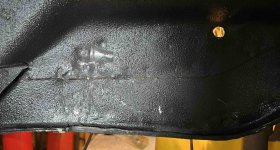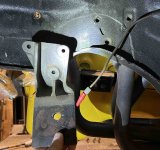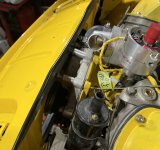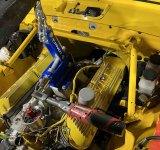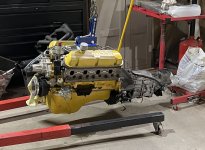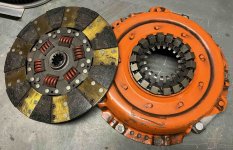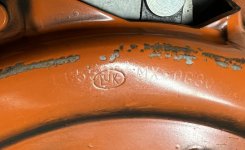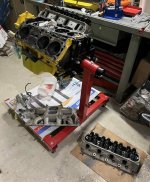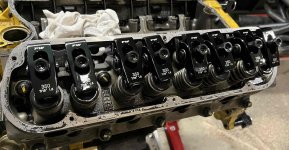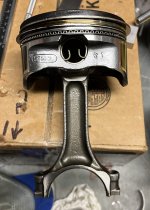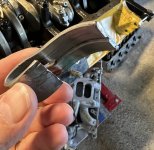It's out! Not an easy job, not a horrible one.
A few points. It is very, very tight. I took the weight of the engine/tranny with the hoist and remove the engine mounts. Are those the stock engine mounts? Pretty cool the large cast piece. That went well. I left the headers on and still aren't sure if it was possible to remove the engine with them on. The engine/tranny moved forward a few inches, then the headers were rubbing on the frame. I moved it up/down/in/out and was not comfortable with how much it was rubbing. So since the engine was moved forward at this point, access to the header bolts wasn't too bad. I took the left side one off. The steering U-joint was removed, so to do that involved loosening the steering shaft clamps in the engine compartment and under the dash. So I could pull the column out of the way of the header bolts. One mistake I made was not removing the spark plugs first. So the header dropped down onto the spark plugs and didn't help with clearance too much. But then I had real trouble getting a spark plug socket on the plugs with the header dropped down onto them. 3 weren't too bad, one was a PIA and took about 20 minutes to remove. But, at that point the header dropped down and I removed it. Removing the engine/tranny was easy after that.
The engine did have to come forward quite a bit to release the rear of the tranny. The adjustable lifting plate, on the intake manifold, is fantastic. Especially with a power ratchet on it; so easy to change the angle of the engine/tranny.
So now the fun part starts, taking the engine apart.
Rick
ps. Don't be fooled with how clean things look. The coolant was all drained before dropping the engine. After the engine out picture was taken I pulled the rag out of the water pump and a litre or so of coolant came out. Where it was hiding I don't know. The large bag of absorbent, that I thought would last me years, is gone. Oh well.
View attachment 18686
View attachment 18687
View attachment 18688
View attachment 18689

